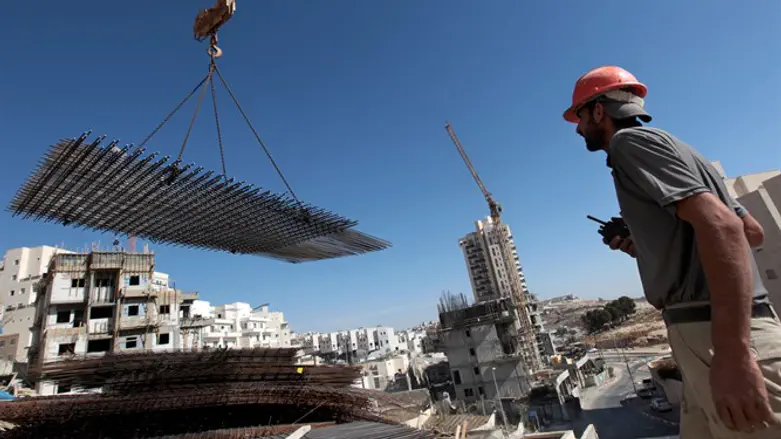
The Jerusalem District Planning Commission is expected to grant permits for thousands of homes in united Jerusalem later this month, Haaretz reported Monday, marking the end of the de facto freeze on Jewish construction in large swaths of the capital.
In 2010, then-Vice President Joseph Biden and Secretary of State Hillary Clinton blasted Israel for the approval of 1,600 housing units in the north Jerusalem neighborhood of Ramat Shlomo.
The approval of the planned project was given during Biden’s first visit to Israel since taking office in 2009, and sparked an angry backlash from the Obama White House.
Following the diplomatic blowup, the Netanyahu government imposed a de facto building freeze on Jewish housing in Jerusalem neighborhoods built since 1967, significantly reducing the number of housing permits issued and slow-walking new projects through committee.
Residents of the capital and nationalist MKs expressed hope following the election of President Donald Trump last November that the inauguration of the new Republican administration would mean the end of the restrictions on Jewish construction imposed in 2010.
Now, it appears that Israel may in fact be on the verge of scrapping the building freeze, with thousands of units likely to be approved over the next two weeks.
Most of the nearly 2,300 units expected to be approved by city planners will be built in large, established neighborhoods. Pisgat Zeev, in northeastern Jerusalem, for example will receive 944 new housing units in a project expected to be approved later this week. Another 116 units are likely to be approved later this month. In the nearby Neve Yaakov neighborhood, 214 units are expected to be approved.
In southern Jerusalem, 800 new units are planned in Gilo, while in northern Jerusalem, 200 homes are planned for Ramot.
But perhaps most significant are plans for 13 housing units and a massive yeshiva complex to be built in the Shimon Hatzaddik neighborhood near the Old City.
Shimon Hatzaddik, called Sheikh Jarrah by local Arabs, borders the Jewish neighborhoods of Maalot Dafna, Arzei Habira, and Shmuel Hanavi, and is home to the tomb of Shimon, a Second Temple-era Kohen Gadol (High Priest). The area had a thriving Jewish community prior to the establishment of Israel in 1948, but was ethnically cleansed of Jews by Jordan during the Israeli War of Independence.
Over the years, Jews have reclaimed Jewish-owned properties in the area, for which there are leases and documents, as the land (a plot of approximately 18 dunams) was purchased in 1876 by the committee of the Sephardic community and the Ashkenazi Assembly of Israel., and a small Jewish community has been renewed in the area near the tomb of Shimon Hatzaddik.
In 2010, plans were submitted to expand the Jewish community in the area, building four new projects on Jewish-owned land.
Among the projects submitted to the city planning committee were a five-story apartment building which would include 10 housing units, a three-story building for three housing units, a six-story office building, and a massive 10-story complex for the Ohr Samayach yeshiva, currently located in Maalot Dafna.
The projects received initial approval from the city in 2014 – after a four year wait – but were never issued building permits.
All of the four projects are planned to be built on Jewish-owned land, though the lots selected for the two housing projects are currently occupied by Arab squatters who enjoy "protected tenant status", a legal definition in force since Ottoman times.
If the city planning committee approves the plans, the owners of the lots will be given permission to remove the squatters, who will receive monetary compensation.
